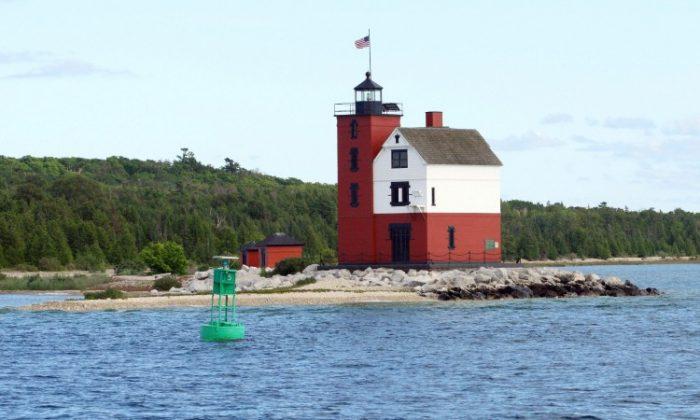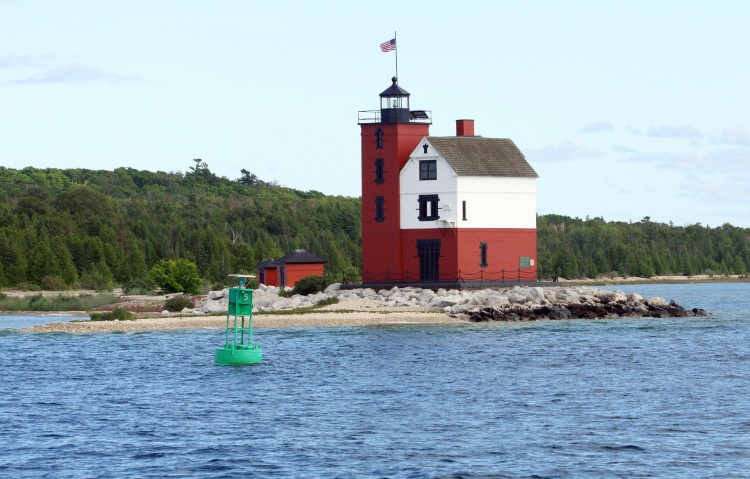Less than 50 percent of plastic waste makes its way into landfills, according to a State University of New York (SUNY) study. America’s Great Lakes are at risk of being polluted by tiny particles of plastic called “nurdles” and 20 undergraduate SUNY students aimed to find out what was lurking in the lakes. The nurdles come from production facilities around the Great Lakes—the largest body of freshwater on the planet.
The students spent 3 weeks this summer working from a 19th-century wooden ship as part of the Great Lakes Restoration Initiative, together with SUNY–Oswego and Clarkson University. Dr. Sherri Mason, SUNY–Fredonia associate professor of chemistry, headed up the study.
“People became aware of plastics in the oceans and waters in the ‘60s and ’70s, and the great Pacific garbage patch,” Mason said. “But from far away, bits of plastic look just like the water. So it’s not so noticeable or recognized in the greater topic of plastics in the environment.”
Much unaccounted plastic finds its way into the lakes, which can cause serious problems for wildlife, fish, and their habitats, as well as the 25 million residents surrounding the Great Lakes.
SUNY’s role is to tally the plastic content of the Great Lakes—specifically, Lake Huron, Lake Erie, and Lake Superior. Lake Michigan is on the plan for next year.
The team used a manta trawl to skim through the top foot of surface water, and were also sifting through sand along the beaches by hand, looking for nurdles.
The amount of plastic in the Great Lakes increased from the least populated area around Superior to Huron. Lake Erie was the most polluted with plastic. The students did find some larger plastics such as lighters and plastic bags, but the microplastics collected were between 330 micrometers and 1 millimeter in size.
“Fishermen haven’t noticed small plastic in fish,” Mason told the Epoch Times. “But there have been some incidents of birds ingesting it thus far.”
According to the EPA, three main problems that plastics cause to the Great Lakes ecosystem are ingestion, entanglement, and ecosystem alteration. Debris such as bottles and take-out containers pose a notable problem. Even cigarette butts contain plastic as well as other toxic chemicals, all of which can easily leach into the water systems and cause problems for the ecosystem, as well as the feeding, nesting, and moving patterns of fish and wildlife.
Funding for the sampling was provided by the Ohio-based Burning River Foundation, through a $10,000 grant.
Mason wanted to study microplastics in the Great Lakes area while she was teaching a class last year. She wondered if plastic was in the Great Lakes, the largest freshwater ecosystem in the world. After looking around, she was surprised to find no previous studies on microplastics in the Great Lakes.
Mason said her intention was to answer the basic question, “Is there plastic in the Great Lakes?” She also wants to know about the impact on the organisms living with that plastic.
“This is the first time microplastics have ever been studied in Great Lakes,” she said.
Mason will now travel around the region raising awareness about the study and providing alternatives to limit plastic use in everyday life, such as bringing reusable eating utensils to work.
“It’s about people recognizing that plastics in the environment is a problem we’re all responsible for, and so the solution is us,” said Mason. “Then it becomes very real to people, and they want to know: ‘What can I do?’”
The Great Lakes Restoration Initiative is sponsored by the Environmental Protection Agency (EPA), which granted $6.5 million to study fish in the Great Lakes. According to the EPA, the restoration initiative addresses five major concerns: cleaning up toxins and areas of concern, combating invasive species, promoting shoreline health by protecting watershed from polluted run-off, restoring wetlands and other habitats, and working with partners on outreach.






